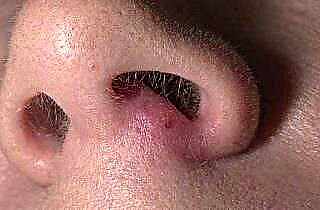Heart disease ranks first in the list of diseases with a high fatal outcome. That is why it is so important to know the symptoms in order to start treatment on time and prolong the patient's life. Considering the violations of the work of the heart muscle in a gender perspective, it is possible to distinguish features in the nature and intensity of pain, predisposing factors and the effectiveness of the prescribed therapy. In women, the symptoms of cardiac diseases are often covered by hormonal levels, which is why they need to more closely monitor their well-being and not ignore the appearance of alarming signs.
Typical manifestations of cardiac symptoms in women
Heart disease is mainly manifested by pain syndrome of various nature and intensity. Specific for some, it may be similar for some other diseases, but in combination with other symptoms will make it possible to suspect the presence of cardiac pathology and consult a doctor in time.
The main diseases accompanied by cardialgia are presented in the table.
| Myocarditis |
|
| Pericarditis |
|
| Exertional angina |
|
| Myocardial infarction |
|
| Cardiosclerosis |
|
| Digestive system problems | Many diseases of the gastrointestinal tract (GIT) are accompanied by pain. With irradiation of pain into the chest, a false idea of the presence of cardiological pathology may arise. But the disappearance of pain when taking No-shpa and the diagnosis of other symptoms of gastrointestinal disease make it possible to exclude changes in the cardiovascular (CC) system. |
| Osteochondrosis | Pathology is characterized by many non-specific symptoms that accompany cardiac pathologies. Due to a violation of nerve conduction, women experience stabbing and pressing pain in the region of the heart, of a prolonged nature. It is greatly enhanced by turning and tilting the body. Heart medications do not help in this case. |
In addition, heart pain can be triggered by:
- uncomfortable posture while sleeping;
- chronic fatigue;
- emotional experiences;
- stay in a cramped room without ventilation.
Many believe that chest pain is the first sign of heart disease in women, but this is not the case. Symptoms indicative of a disease can also be:
- dyspnea;
- fainting;
- dyspepsia;
- back pain;
- dyssomnia - sleep disorders in the form of insomnia or disturbances in the circadian rhythm.
How is CVD care different by gender?
The paradox in helping with the onset of symptoms of cardiovascular disease is the frequency of emergency calls. People immediately react if chest pain occurs in men, and delay the time to call 103 for the same symptoms in women. Moreover, such actions are often due to the behavior of the patients themselves.
In most instructions for drugs and many clinical guidelines, information on the optimal doses and side effects regarding the fair sex is absent, or not sufficiently clarified. Although the fact of the influence of anatomical and physiological features on the pharmacokinetics and pharmacodynamics of drugs has long been proven:
- women have a higher percentage of body fat, lower glomerular filtration and creatinine clearance;
- fluctuations in the amount of tissue fluid and sex hormones during menstruation;
- characterized by a frequent increase in heart rate and a decrease in the duration of the cardiac cycle in comparison with men.
The above features play a significant role in the development of adverse drug reactions. So, for example, it became known that the body of women reacts weaker to nitroglycerin. Therefore, it would be advisable for pharmaceutical developers to dwell in more detail on the gender characteristics of the influence of drugs, and for the attending physicians to take them into account when prescribing drugs.
Influence of female gender on prognosis in cardiovascular pathology
According to the WHO, the symptoms of heart disease in women appear later and have a more severe course than in men. The fairer sex is 16% more likely to die from myocardial infarction and are prone to relapse. The reason for such consequences is that 92% of women do not see a threat to their lives in cardiac pathology, more being wary of the occurrence of tumor processes.
Director of the Women's Heart Clinic, American cardiologist Sharon Hayes comments on these indicators: “There is a certain discrepancy: women are confident in the danger of cardiac pathology, but are more afraid of breast cancer.” Even physicians themselves have long used the so-called "bikini approach" to assess women's health indicators.
The focus is on the organs of the reproductive system and the prevention of breast cancer. At a young age, caring for the condition of the expectant mother and fetus is added to them. And the fact that in every third case women die precisely because of SS diseases is overlooked.
Conclusions
The most common cause of death among men and women worldwide is cardiac disease. Especially increases the risk of developing heart disease in the fairer sex after 50 years. Sometimes ordinary fatigue, back pain, or indigestion are the first symptoms of heart disease in women. Therefore, it is so important to know what are the signs of cardiac pathology. Timely diagnosis and proper treatment not only affect life expectancy, but also its quality. To be sure of the health of your heart, you need to visit a cardiologist at least 1 time in 2 years, and after 40 years, preventive examinations should become an annual ritual.



